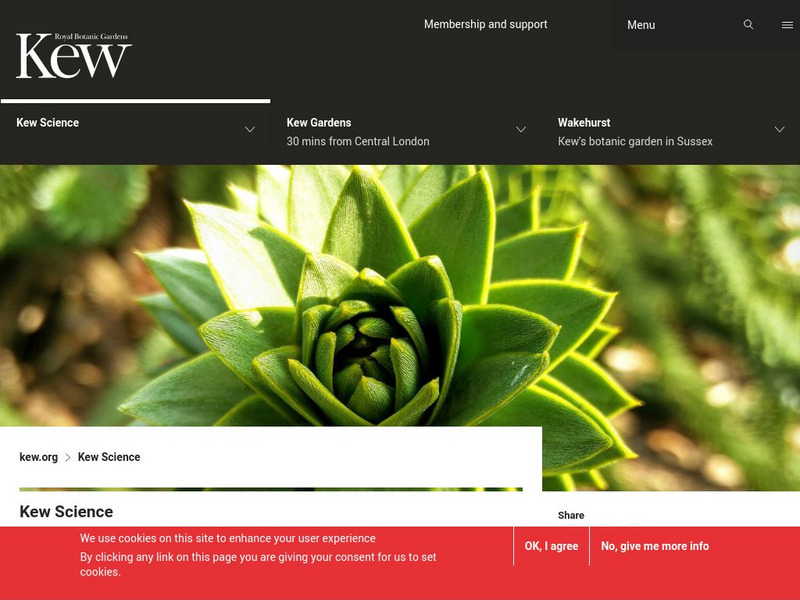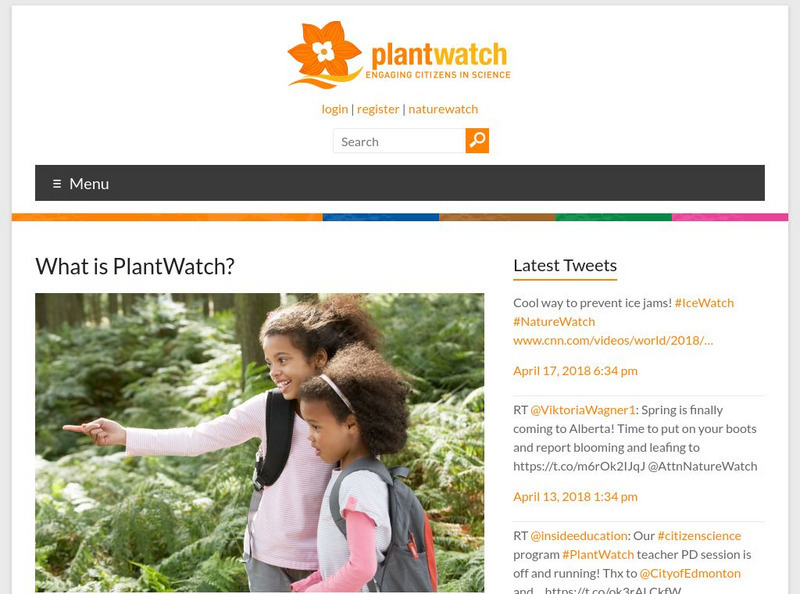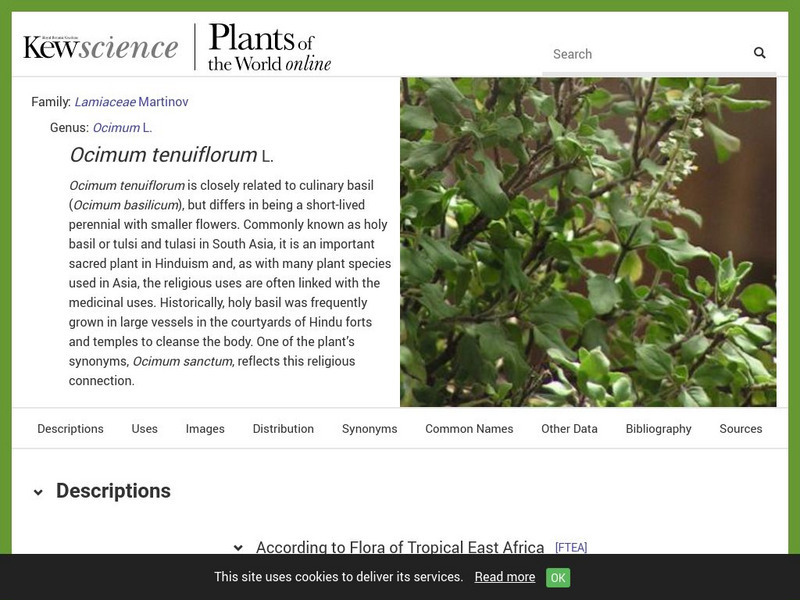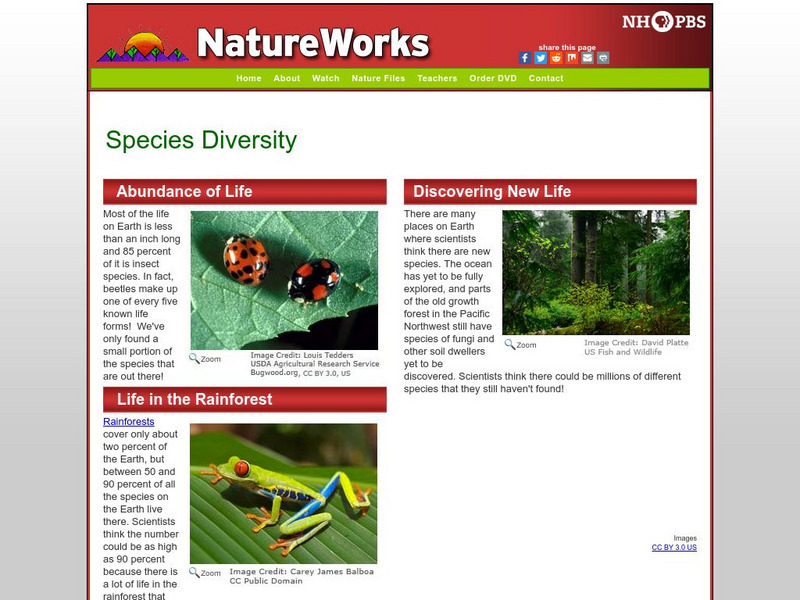University of Maryland
University of Maryland: Plant Biology
A webpage for a course on plant biology for non-science majors. The course covers how plants function, diversity among plants, and the roles of plants in the environment. Site includes lectures, a plant project, and a sample exam.
Other
Ny Botanical Garden: Fungal and Plant Diversity
Findings of an expedition by the New York Botanical Garden in French Guiana to investigate vegetation.
Royal Botanic Gardens
Plant Cultures: Garlic
Discover the many uses garlic has in the making of different foods and medicines as you peruse through this informative resource. You will be exposed to a detailed plant profile and history in addition to a number of interesting facts...
Royal Botanic Gardens
Plant Cultures: Marigolds
This comprehensive resource examines the plant profile, history, spiritual uses, production and trade, medicinal properties, and food uses of the marigold.
Royal Botanic Gardens
Plant Cultures: Cardamom
Did you know that cardamom is the third most expensive spice in the world? Learn more about this interesting plant as you delve into the history, production, medicinal properties and more.
Royal Botanic Gardens
Plant Cultures: Hemp
Plant profile, history, production & trade, traditional medicine, western medicine, drug, food, and crafts are the key topics explored in this thorough resource.
Royal Botanic Gardens
Plant Cultures: Tea
This resource provides information about the tea plant, including its history, production, trade, medicinal properties and more.
Royal Botanic Gardens
Plant Cultures: Betelnut
This comprehensive resource delves into betelnut history, spiritual significance, production, trade, and more. Interesting pictures of the plant supplement the text.
Royal Botanic Gardens
Plant Cultures: Tamarind
This resource explores the many facets and diverse uses of tamarind. You will find the following topics in this informative site: general description, history, spiritual connection, production and trade, medicinal purposes, food uses,...
Royal Botanic Gardens
Plant Cultures: Exploring Plants and People
Did you know that a cup of tea contains less caffeine than a cup of coffee or that several people are killed each year from falling coconuts? This resource provides factual and out of the ordinary information about 25 different kinds of...
Other
Nature Canada: Connect With Nature: Plant Watch
PlantWatch is a Canadian program that uses volunteers to record data about a variety of plant species in each province and territory, and then submit their observations. Monitoring plants provides valuable information about the health of...
Royal Botanic Gardens
Plant Cultures: Ginger
This comprehensive resource discusses the history, production, trade, medicinal properties and uses of ginger in food.
Royal Botanic Gardens
Plant Cultures: Holy Basil
Holy basil is a plant that kills germs, reduces inflammation, and deters insects. More facts about the plant are included in this resource.
Royal Botanic Gardens
Plant Cultures: Black Pepper
Origin, history, plant profile, traditional medicine, and western medicine are but a few of the black pepper topics delved into on this site. Many pictures supplement the text.
Royal Botanic Gardens
Plant Cultures: Chilli Pepper
This resource presents extensive information about the chilli pepper plant, including its medicinal uses, food uses, and more.
Science Education Resource Center at Carleton College
Serc: Using Plant Surveys to Study Biodiversity
An extended field investigation intended as launch into several concepts in environmental science including biodiversity, human impacts on natural systems, and energy transfer in ecosystems.
Alabama Learning Exchange
Alex: What Kind of Plant Is It?
This lesson provides a fun way for students to learn to classify plants as vascular and nonvascular. Students will use drawing software to create pictures of vascular and nonvascular plants.
Palomar Community College District
Wayne's Word: The Castor Bean: Plant Named After a Tick
A fascinating article on the natural history and biochemistry of castor oil. There are sections that are basic and descriptive as well as more technical information.
CK-12 Foundation
Ck 12: Life Science: Plant Like Protists
[Free Registration/Login may be required to access all resource tools.] Plant-like protists are known as algae. They are a large and diverse group. Plant-like protists are autotrophs. This means that they produce their own food. They...
Royal Botanic Gardens
Plant Cultures: Henna
This complete resource examines the many uses of henna in medicine, cosmetics, dyes, perfumes and more. Interesting pictures supplement the text explanations.
Other
The Charms of Duckweed (Smallest Flowering Plant)
Have a fun learning experience as you read about the smallest flowering plant. Botanical facts, pictures, projects, and practical uses of the Duckweed plant are all part of this site.
PBS
Nh Pbs: Nature Works: Species Diversity
If your wondering about the biodiversity of species on Earth, then check out Natureworks from New Hampshire Public Television. A brief definition is included as well as some interesting facts on species diversity.
Royal Botanic Gardens
Plant Cultures: Sugar Cane
Many interesting facts about sugar cane are presented in this thorough resource. Topics examined include history medicine food uses cosmetic application, and more.
Cynthia J. O'Hora
Mrs. O's House: Biodiversity Exploration Investigation
A scientific task sending students into the great outdoors to discover a plant they do not know and record observations of that new plant.
Other popular searches
- Plant Diversity Activities
- Plant Diversity Map
- Genetics and Plant Diversity
- Plant Diversity Section 22.2
- Plant Diversity Section 222
- Plant Diversity Worksheet
















